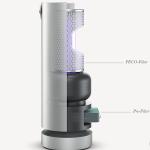King Solomon may have gained some of his famed wisdom from an unlikely source – ants.
fungi
“Back in February we saw a dramatic example of world regulatory coordination. Around the world public health authorities were talking about treating this virus like they had treated all the others in the last few decades.
A serious infectious disease nearly wiped out a beloved species in the United States. Scientists have now discovered how to bring it back. Should they restore this once prevalent species to its former glory?
Though the sciences of microbiology and public health have largely made infectious disease an afterthought for most people in the developed world, microbes have not gone away.
We're a nation of confused germophobes.
I will never be out of a job because literally, every single day, something idiotic is trending either on Google or Twitter. Today, the trending term is "Rubber Duck."








